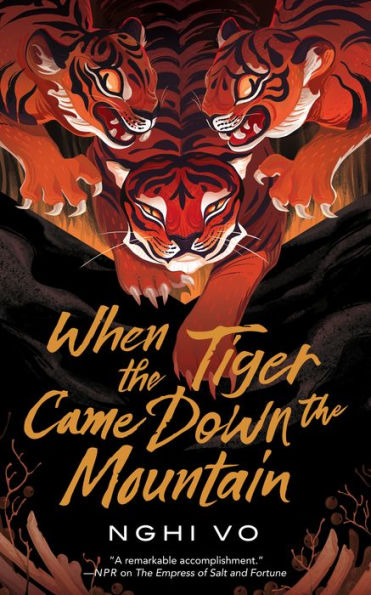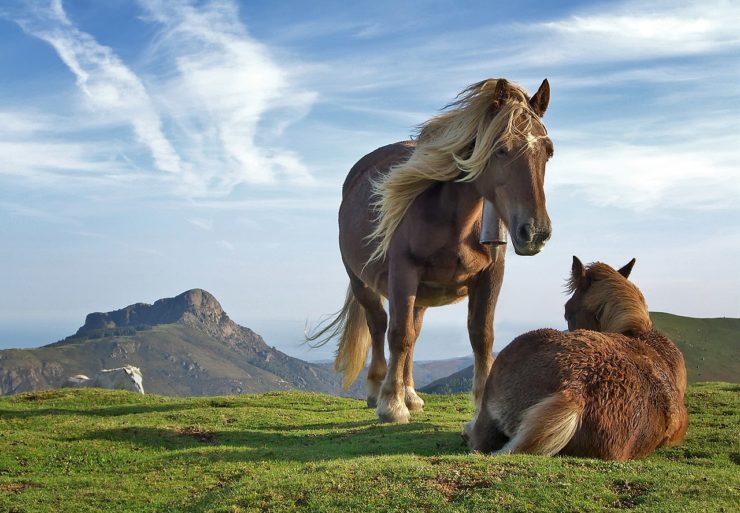Horses are very much a part of the space they live in. They’re meant to spend their lives within the structure of a herd: a complex social organization with a constantly evolving but ultimately consistent set of rules and hierarchies. Lead mare in charge, lesser mares and youngsters moving up and down beneath, stallion and any subsidiary males guarding the perimeters and fending off predators.
The territory they inhabit is likewise as consistent as terrain, predators, and natural phenomena allow. In a domesticated situation, that means they can become barnbound or stall-bound. They stick to the familiar surroundings and strongly resist change in or removal from those surroundings.
When I write about horses, one thing I try to do is see the world the way a horse would see it. This has the interesting effect of expanding my perception of the world I’m writing in. It teaches me to see not only the horses but the setting as characters in the story.
To the horses, the setting is part of their identity. They know what every sound and scent means, and where the terrain is safe and where danger can hide. They can find their way to water and follow the paths to forage.
They aren’t always smart about what to eat. If they’re hungry and it’s green, they may go for it even if it’s toxic, and end up dead. But the wise ones, the ones who survive, will recognize that bitter usually means bad, and will refuse to eat fermented or moldy feeds that their digestive systems aren’t able to process safely. Here in the Arizona desert, they’ll stay away from cactus and eat around the dangerous plants.
That’s the empirical part of being a horse. Living in the environment, and making sure both the individual and the herd survives.
Buy the Book


When the Tiger Came Down the Mountain
Then there’s the part that in our culture gets labeled fantasy. The part our culture calls woo-woo and weirdness and superstition.
Horses live deeply in this world. They’re aware of each other on levels that modern humans can barely understand. Their communications can be extremely subtle, what we would call subliminal. Their spatial awareness is acute. You could call it paranormal, if your definition of normal is the range of human senses.
Then again, human senses may not be as limited as we tend to think. The problem is that we may not have the tools to detect the elements of the weird, and therefore can’t be sure there is anything to measure. Hence, the range of phenomena from psychic powers to ghosts and spirits, and of course the whole idea of magic, hovers beyond the edges of our science.
Animals walk in and out through these boundaries. Many cultures regard them as powers in their own right, whether spirit guides or manifestations of natural forces or actual divinities. The hawk circling over you may be one of your ancestors, or the coyote trotting down the road is not just hunting rabbits, he’s embodying the wilder parts of the world around you.
This way of thinking supposes not only that the world is full of forces that have their own agenda, but that those forces may be inclined to help or hinder humans who attract their notice—whether voluntarily or not. The human who is open to it can turn it to their benefit, or at least use it to keep themself safe in a big and dangerous universe.
It’s the openness that’s necessary. That doesn’t mean blind credulity, at all. The genuinely open mind recognizes the false as well as the (possibly) true.
It also refrains from judgment. It accepts the animal or the phenomenon on its own terms, and doesn’t try to impose its own values and assumptions.
That’s where the magic literally happens, if you’re a writer. Right on the boundary between accepted reality and the wild and the weird. When you bring animals into it, your perception of the world can expand tremendously, and your understanding of what’s around you will change in amazing and sometimes mind-blowing ways.
Judith Tarr’s first novel, The Isle of Glass, appeared in 1985. Since then she’s written novels and shorter works of historical fiction and historical fantasy and epic fantasy and space opera and contemporary fantasy, many of which have been reborn as ebooks. She has even written a primer for writers: Writing Horses: The Fine Art of Getting It Right. She has won the Crawford Award, and been a finalist for the World Fantasy Award and the Locus Award. She lives in Arizona with an assortment of cats, a blue-eyed dog, and a herd of Lipizzan horses.










